Employee benefit strategies have been changing rapidly for years, to adapt to evolving work environments. Then, as Americans navigated the pandemic, there were even more levels of complexity. The almost immediate quarantine and shift in work environments shook our sense of security; not just of job security but of financial security and health security as well. As part of that, it has become evident that the pandemic has changed the way both employers and employees look at benefits strategies.
Historically, employee benefit strategies focused mainly on traditional healthcare and retirement offerings. But as employees evolved, especially in the Millennial demographic, benefits have had to become broader and more flexible. And focus shifted to how, when, and where employers communicate with employees about their options. Then COVID hit, and things changed more quickly and more dramatically.
Last year, the Business Roundtable highlighted where we may find ourselves while formulating benefit strategies for employees both during and after the pandemic. They said, “It’s not only a moral imperative to offer good benefits and economic security to employees – it’s smart business. When companies have talented and diverse employees who feel secure at work and at home, both people and businesses perform at their best.”
Let’s take a look at just how the decreased feelings of security have affected workers and how the pandemic changes benefit strategies for both employees and employers.
How have people been changed by the pandemic?
Recent studies show that a majority of workers have struggled with a number of concerns. These range from financial stress, burnout and/or mental health, childcare and/or elder care, and physical health. All of these can be seen in some way across the different age groups currently in the workforce.
How has the pandemic changed the workforce and benefit strategies?
An overwhelming majority of the American workforce is comprised of four generations: Baby Boomers, Gen X, Millennials, and Gen Z. These have all dealt with the pandemic differently. For example:
- 50% more Boomers retired in 2020 than during any other year in the past decade, whether from health concerns or difficulty adapting to the required business changes.
- Gen X is struggling with emergency savings and dependent care, all while trying to figure out how to juggle their many responsibilities.
- Millennials find themselves deep in debt and turning to retirement savings to stay afloat.
- Gen Z is most concerned with gaining new skills and having new opportunities. Having seen so many layoffs and/or furloughs, they want a “Plan B” to find other employment if necessary.
Employees are seeking more than traditional benefits and health insurance
Traditional health insurance coverage used to represent the most important benefit for most employees and still does for many. But the winds of change began to kick up during the pandemic. With so many people not working, due either to layoffs/furloughs or resignations, and the cost of benefits increasing, employers are trying to find a middle ground. Diversity became the goal, and offerings shifted in response to the changing situation. Benefit options started to pop up for mental well-being, smoking cessation, remote work for work-life balance, tuition reimbursement, and more.
To quote Jennifer DeMeo from Willis Towers Watson: “Amid the ongoing pandemic, employers are under increasing pressure to manage their benefit costs, while at the same time finding new ways to support their employees’ overall well-being.”

Let’s start with what employees want as a whole:
- Living within their means
- Growing their retirement income
- Eating healthy
- Caring for their overall health
- Work/life balance
- Building emergency funds
- Exercising and managing stress
- Growing and maintaining relationships
- Gaining new job skills
- Advancing careers
Employers are considering more creative benefit strategies
Many employees left the workforce during the pandemic due to isolation recommendations, lack of childcare options, and such. Many of those employees have yet to return, so employers who are seeing a return to normal levels need to at least retain the talent they have, if not motivate others to come back. Having a benefits package that sets you apart from other companies looking to recruit the same talent is no longer an option. So to retain, if not attract new talent, it’s important to consider several benefit strategies:
Be Proactive
To stay on top of employees’ changing needs, wants, and priorities, it’s a good idea to poll employees during a plan year to identify gaps, shortfalls, and educational needs. Data analytics can track benefits usage, which in turn can identify offerings that have become outdated, irrelevant or seldom-used, regardless of what employees tell you.
Go Digital
Once upon a time, open enrollment was comprised of a meeting and tons of paperwork. These options may still resonate with some workers, but they may no longer be the most efficient options. The verbal messaging of a mundane meeting may have been forgotten the next day, and paperwork may have been misplaced if not lost entirely. But, with so many of us living online and on our smartphones, you may get and retain attention better by digitizing your communication plan. So consider modernizing the way you communicate your benefit options and how to use them.
Offer Voluntary Benefits
Voluntary benefits above and beyond health insurance can help employers to help employees in the exact areas that are important to them without having to participate in complicated, costly programs they don’t need. In the past, these may have included things like life insurance, accident coverage, pet insurance, Flexible Spending Accounts, Health Savings Accounts, and the like. But that’s not enough anymore. Now let’s look at newer, more creative benefit strategies that employers are considering to address these issues, and why:
- Flexible workplaces and schedules may provide the employer with benefits by reducing facilities overhead and enabling employees to be more productive.
- Well-being programs with non-medical benefits that employees can buy may help to provide stress management and preventative health benefits.
- Employee Assistance Programs that focus on both physical and mental telehealth may make it easier for employees to take care of themselves.
- Student Loan Repayment Assistance may help relieve the concerns of employees drowning in debt so they can better focus on doing good work.
- Emergency Savings Accounts can especially help younger workers, who have had less time to prepare for a rainy day, do so in an easy, automated way.
- Finally, Lifestyle Spending Accounts can provide employees with help for wellness, financial planning, charitable involvement, pet care, dependent care, housing, travel, entertainment, and more.
Make Engagement One of Your Benefit Strategies
All of the hard work you put into a benefits package is for naught if employees don’t understand benefits or understand them and don’t use them. So, how can you encourage higher engagement?
- Learn – Learn about employees’ needs, so you know you are hitting the right marks.
- Educate – Employees don’t always know how personal changes can affect their benefits eligibility. In the face of the impersonal remote work environment, it can be hard to know when an employee takes on an elderly dependent, has unforeseen health issues, etc. Educate them on why you are updating your options and the value they bring to employees. Even if they don’t think they need it today, none of us knows what tomorrow will bring.
- Communicate – Regularly remind your employees what benefits they have, how to use them, and what they can buy with them.
- Make it fun – Anyone who has sat through a dry open enrollment presentation may not look forward to benefit discussions. Use creative educational programs like The Adventures of Captain Contributor to educate in a fun and engaging way.
If the pandemic taught us nothing else, it is how to get creative. We’re all doing things we never dreamed we’d have (or be able) to do. The disruption caused employers and employees to work more closely to take care of each other. Happier, healthier employees increase productivity, reduce absenteeism and serve customers and clients more effectively. But they also want a better quality of life, and to attract and retain top talent, employers need to help provide it.
For 40 years, DataPath has been a pivotal force in the employee benefits, financial services, and insurance industries. The company’s flagship DataPath Summit platform offers an integrated solution for managing CDH, HSA, Well-Being, COBRA, and Billing. Through its partnership with Accelergent Growth Solutions, DataPath also offers expert BPO services, automation, outsourced customer service, and award-winning marketing services.
